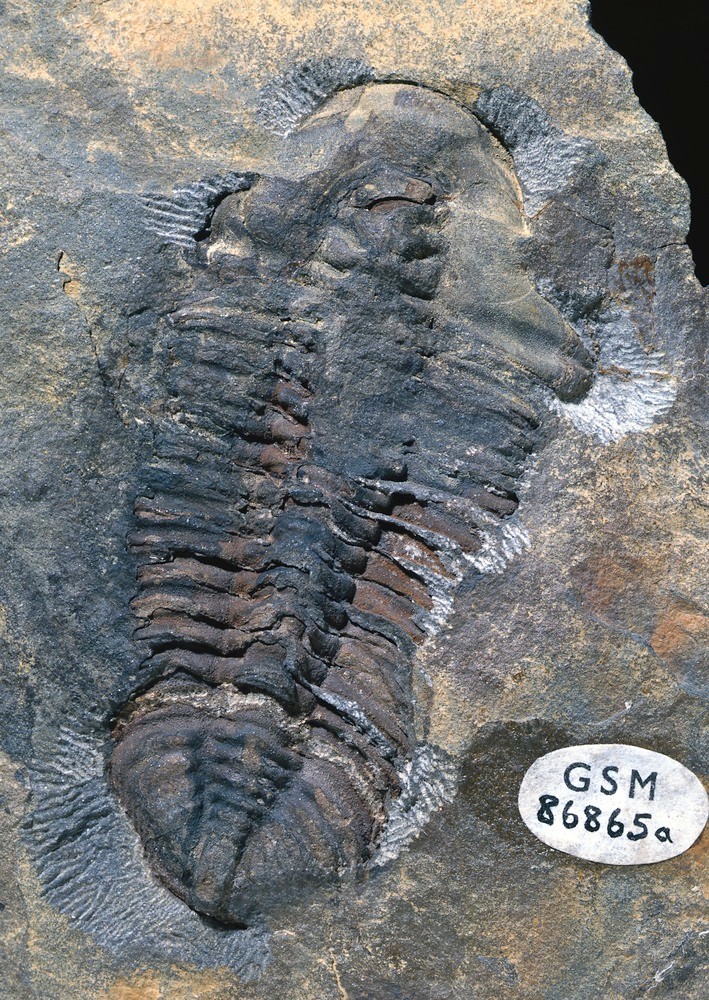| P number: | P550299 |
|---|---|
| Caption: | Neseuretus, an Ordovician trilobite. |
| Description: | Neseuretus is a trilobite that is found associated with very shallow water deposits and is thus a good palaeoenvironmental indicator. It is confined to rocks that were deposited during early Ordovician times (about 470-495 million years ago). It is found throughout the Northern Hemisphere. Neseuretus is a medium-sized (about 7 cm. long) trilobite with an elongate body formed of 13 segments. The head (cephalon) has a trapezoid glabella (central lobe of the head), with 3 pairs of lateral furrows, and small eyes. The tail (pygidium) is small and subtriangular and formed by 8 to 10 welded segments. Trilobites were arthropods, distant relatives of crustaceans and insect that live today. They lived in the seas of the early Cambrian and they became extinct with the mass extinction at the end of the Permian times. Trilobites are divided into three parts, the cephalon (the head, which is divided into the central glabella with two cheeks each side); the thorax (body, also divided into three and comprising a number of segments); and the pygidium (the tail, also divided into three). These animals often had well developed eyes, with many lenses made of calcite crystals, although others were blind. Some trilobites swam, most scurried about on the sea floor and yet others burrowed in to the sand on the sea floor |
| Photographer: | Unknown |
| Copyright statement: | Unknown |
| Orientation: | Portrait |
| Size: | 634.04 KB; 709 x 1000 pixels; 60 x 85 mm (print at 300 DPI); 188 x 265 mm (screen at 96 DPI); |
| Average Rating: | Not yet rated |
| Categories: | Best of BGS Images/ Fossils |
Reviews
There is currently no feedback

